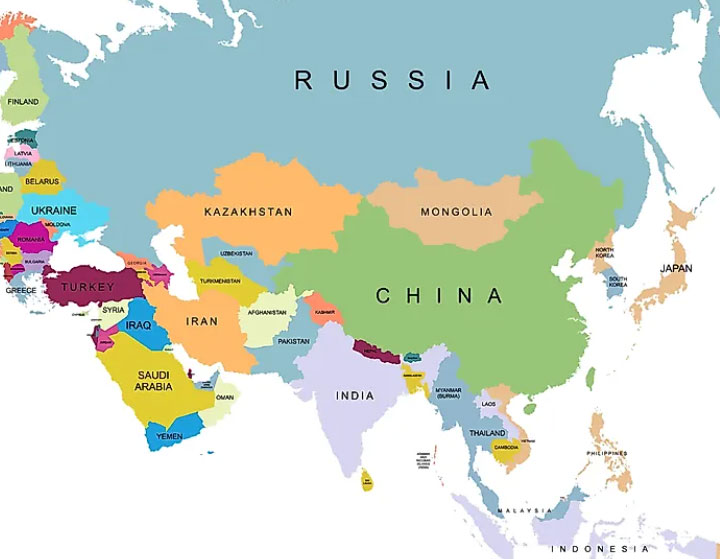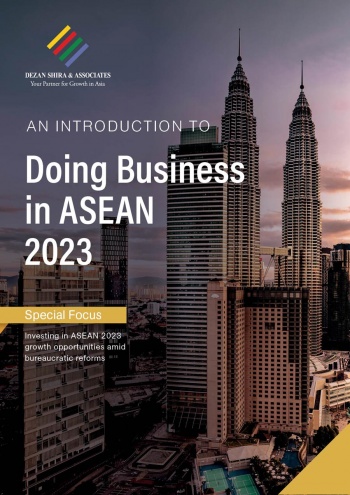Gulf and Central Asian Countries Hold First CA+GCC Heads Of State Summit
Summit will redefine regional dynamics, strengthen ties in trade, economy, culture, and streamline investment projects.
Saudi Arabia has been hosting the first summit of the Central Asia + Cooperation Council for the Arab States of the Persian Gulf (GCC) in Jeddah. This new format of interregional cooperation, labelled the CA+GCC, has been created to resolve trade, economic, cultural, and humanitarian ties and streamline those investment projects that the Gulf countries are implementing in the Central Asian region. Attendees included the Heads of State from the Gulf countries (Saudi Arabia, United Arab Emirates, Kuwait, Bahrain, Oman, and Qatar) and Central Asian states (Kazakhstan, Kyrgyzstan, Tajikistan, Uzbekistan, and Turkmenistan).
Saudi Arabia, the largest country in the Persian Gulf region was the initiator of the CA+GCC. It was the religious factor that became the unifying factor in the process of establishing political, trade, economic and other ties with the states of Central Asia by the Persian Gulf countries.
It is of note that immediately before their visit, Saudi Arabia was also visited by the Turkish President, Recep Tayyip Erdogan, who signed bilateral agreements on cooperation in various fields with the country and whose presence just before the CA+GCC forum would have conveyed Turkiye’s influence.
The Jeddah Heads of State Summit came as a result of the first ministerial meeting of the strategic dialogue “Cooperation Council for the Arab States of the Gulf Central Asia” which was held in Riyadh last year.
The CA+GCC participants have agreed to intensify cooperation on such tracks as restoring supply chains, and transport links lost during the covid pandemic; strengthen food, energy and water security; develop green energy; address environmental issues and the effects of climate change; exchange of best practices in all areas; and develop appropriate trade and investment mechanisms.
As such, the CA+GCC can be expected to emerge as a regional game-changer and connect the Middle East to Central and Southeast Asia. It is focused on systematic interaction and to institutionalize development projects implemented by the GCC into the region.

Active Central Asian-GCC Participation
The Gulf countries are actively investing in Central Asia. In 2022, the Kazakhstan President, Kassym-Jomart Tokayev visited Jeddah, and signed agreements for multimillion-dollar investments, and obtained the support of Saudi Arabia’s state sovereign investment fund. That is now working on projects in conjunction with the Kazakh sovereign wealth funds Samruk-Kazyna and NUH Baiterek.
Tokayev, in turn, promised long-term supplies of wheat, flour and oilseeds, which Saudi Arabia had previously purchased from Ukraine. In addition, Shavkat Mirziyoyev, the President of Uzbekistan, also visited Saudi Arabia in August 2022, signing bilateral investment agreements worth US$14 billion, of which US$12 billion are intended for the development of the energy sector. GCC businesses are actively investing in the Uzbekistan energy sector, in particular in the construction and installation of renewable energy sources wind and solar stations, and gas-fired thermal power substations.
The UAE is also considered a major investor in the Central Asian countries. Bakhtiyor Ergashev, a director of the Centre for Research Initiatives has said that the UAE invests more in Uzbekistan than Saudi Arabia.
“In the future, it is the UAE that will take a serious place among investors. Moreover, the UAE is negotiating with the Eurasian Economic Union (EAEU) on an agreement to create a free trade zone.”
The EAEU includes the Central Asian countries of Kazakhstan and Kyrgyzstan, in addition to Armenia, Belarus and Russia.
Also active in Central Asia is Qatar. In June 2023, the Emir of Qatar, Sheikh Tamim bin Hamad Al Thani, after visiting the Central Asian region, left behind an investment trail. Uzbekistan received more than US$12 billion of Qatari investments directed to energy, logistics and agriculture. The sheikh promised Kyrgyzstan cooperation in the security sphere, as the country needs to improve its capabilities concerning its borders with Afghanistan.
In Tajikistan, where China has also heavily invested, the Emir opened the largest mosque in Central Asia, capable of holding 133,000 people, at a cost to Qatar of US$100 million.
CA+GCC Intent
This indicates there is significant GCC desire to invest in Central Asia. However, compared to the volume of investments coming into Central Asia from other directions, such as from China and Russia, the GCC have not to date been quite as organised or competitive. However, CA+GCC forum will create a single mechanism that will strengthen the presence of the Persian Gulf countries in the Central Asian region.
Proposed Intra-Regional Investment Projects
The CA+GCC summit also promised to encourage multilateral investments, noting in their Joint Statement for a strengthening of relations between financial and economic institutions and for business sectors on both sides to achieve mutual benefits by exploring areas of cooperation and the opportunities available to provide an attractive environment for the business sector, trade, joint investments and economic cooperation.
The statement says the leaders will aim to achieve integration over available opportunities and develop investment fields, discuss development priorities, and exchange experiences in line with their joint action plan.
These include interaction in high technologies and investments, with the summit noting the need to create platforms and working mechanisms for cooperation in the field of innovation, artificial intelligence, green economy, digitalisation, smart agriculture, nano and biotechnologies. An initiative was put forward to create a Joint CA+GCC Council of Investors with the participation of private sector businesses, and to hold its first meeting in Samarkand.
The CA+GCC also wish to introduce the effective use of the potential of regional investment funds, and to expand mutual banking activities. It also considered it important to adopt a separate Roadmap for the joint implementation of projects in green energy. The importance of developing an international Joint Research Program on the basis of the University for the Study of Environment and Climate Change of Central Asia, which is opening in Uzbekistan, was noted.
Tourism was also discussed, with a proposal to create a single visa-free tourist Central Asia-GCC space, involving joint tourism products, as well as to hold a forum of leading tour operators of the two regions in the city of Khiva, (Uzbekistan) which is to be the Tourism Capital of the Islamic World in 2024.
They also stressed the importance of continuing cooperation between the countries of the GCC and Central Asia in international forums and organisations, such as the International Monetary Fund and the World Bank, to help meet the economic challenges.
Connectivity, Transportation, & Free Trade
The introduction of CA+GCC format is timely as it comes when the International North-South Transportation Corridor (INSTC) is set to be completed. This provides a multimodal transit route between the Middle East and Central Asia through Iran to the Caspian Sea, and the Central Asian ports at Turkmenistan and Kazakhstan.
In terms of logistics and trade, the statement also stressed the importance of further developing transport routes to connect the two regions, including the Middle Corridor, building strong logistical and commercial networks and developing effective systems that contribute to the exchange of products.
This included the partners to take an active part in the construction of the Trans-Afghan railway, which would connect the Gulf states with Central Asia along the shortest route. That would link Uzbekistan via Afghanistan to the Pakistani port at Gwadar – a relatively short maritime distance from the UAE.
This included the creation of CA-GCC free trade zones, harmonizing technical regulations, reducing tariffs, and developing e-commerce. In this regard, it was proposed to work out a multilateral trade agreement. The parties also agreed to an increase in direct flights between the two regions.
As regards future CA+GCC events, Saudi Arabia will host an investment forum between the GCC and Central Asia in Q4 this year, while Turkmenistan and Kyrgyzstan will jointly host a CA+GCC investment forum in 2024. The next CA-GCC Heads of State is scheduled to take place in Samarkand next year.
Related Reading
- UAE – Central Asia Multilateral Trade: Status & Prospects
- Dubai Boosting Trade Potential With Central Asia
About Us
Middle East Briefing is one of five regional publications under the Asia Briefing brand. It is supported by Dezan Shira & Associates, a pan-Asia, multi-disciplinary professional services firm that assists foreign investors throughout Asia, including through offices in Dubai (UAE), China, India, Vietnam, Singapore, Indonesia, Italy, Germany, and USA. We also have partner firms in Malaysia, Bangladesh, the Philippines, Thailand, and Australia.
For support with establishing a business in the Middle East, or for assistance in analyzing and entering markets elsewhere in Asia, please contact us at dubai@dezshira.com or visit us at www.dezshira.com. To subscribe for content products from the Middle East Briefing, please click here.
- Previous Article China’s Total Middle East and Africa Trade Up To US$1.63 Trillion
- Next Article Dubai Chamber Of Commerce Opens Office In Ho Chi Minh City





